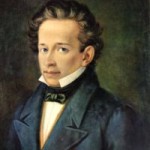 On this day in 1837, Italian poet, essayist, philosopher, and philologist, Giacomo Leopardi died in Naples at the age of 38 during the cholera epidemic. Born Giacomo Taldegardo Francesco di Sales Saverio Pietro Leopardi on 29 June 1798 in Recanati, Papal States. Although he lived in a secluded town in the ultra-conservative Papal States, he came in touch with the main thoughts of the Enlightenment, and by his own literary evolution, created a remarkable and renowned poetic work, related to the Romantic era.
On this day in 1837, Italian poet, essayist, philosopher, and philologist, Giacomo Leopardi died in Naples at the age of 38 during the cholera epidemic. Born Giacomo Taldegardo Francesco di Sales Saverio Pietro Leopardi on 29 June 1798 in Recanati, Papal States. Although he lived in a secluded town in the ultra-conservative Papal States, he came in touch with the main thoughts of the Enlightenment, and by his own literary evolution, created a remarkable and renowned poetic work, related to the Romantic era.
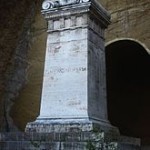 The Final Footprint – Thanks to Antonio Ranieri’s intervention with the authorities, Leopardi’s remains were prevented from being ignominiously buried in the common grave (as the strict hygienic regulations of the time required) and he was entombed in the atrium of the church of San Vitale at Fuorigrotta. In 1939 his tomb, moved to the Parco Virgiliano, was declared a national monument.
The Final Footprint – Thanks to Antonio Ranieri’s intervention with the authorities, Leopardi’s remains were prevented from being ignominiously buried in the common grave (as the strict hygienic regulations of the time required) and he was entombed in the atrium of the church of San Vitale at Fuorigrotta. In 1939 his tomb, moved to the Parco Virgiliano, was declared a national monument.
#RIP #OTD in 1926 painter, printmaker, one of “les trois grandes dames” of Impressionism, Mary Cassatt died at Château de Beaufresne, near Paris, aged 82. The family vault at Le Mesnil-Théribus, France
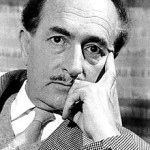 On this day in 1968, Italian author and poet, 1959 recipient of the Nobel Prize for Literature “for his lyrical poetry, which with classical fire expresses the tragic experience of life in our own times”, Salvatore Quasimodo died from a cerebral hemorrhage in a hospital in Naples at the age of 66. Born on 20 August 1901 in Modica, Sicily. Along with Giuseppe Ungaretti and Eugenio Montale, he is one of the foremost Italian poets of the 20th century.
On this day in 1968, Italian author and poet, 1959 recipient of the Nobel Prize for Literature “for his lyrical poetry, which with classical fire expresses the tragic experience of life in our own times”, Salvatore Quasimodo died from a cerebral hemorrhage in a hospital in Naples at the age of 66. Born on 20 August 1901 in Modica, Sicily. Along with Giuseppe Ungaretti and Eugenio Montale, he is one of the foremost Italian poets of the 20th century.
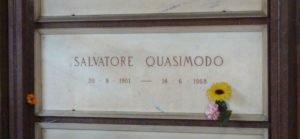 The Final Footprint – He was interred in the Cimitero Monumentale in Milan.
The Final Footprint – He was interred in the Cimitero Monumentale in Milan.
| Jorge Luis Borges | |
|---|---|
 in 1921 |
|
On this day in 1986, short-story writer, essayist, poet and translator, Jorge Luis Borges died of liver cancer in Geneva at the age of 86. Born Jorge Francisco Isidoro Luis Borges Acevedo on 24 August 1899 in Buenos Aires, Argentina. He was a key figure in Spanish-language literature. His best-known books, Ficciones (Fictions) and El Aleph (The Aleph), published in the 1940s, are compilations of short stories interconnected by common themes, including dreams, labyrinths, libraries, mirrors, fictional writers, philosophy, and religion. Borges’ works have contributed to philosophical literature and the fantasy genre.
In 1914, Borges’ family moved to Switzerland, where he studied at the Collège de Genève. The family travelled widely in Europe, including Spain. On his return to Argentina in 1921, Borges began publishing his poems and essays in surrealist literary journals. He also worked as a librarian and public lecturer. In 1955, he was appointed director of the National Public Library and professor of English Literature at the University of Buenos Aires. He became completely blind by the age of 55; as he never learned braille, he became unable to read. Scholars have suggested that his progressive blindness helped him to create innovative literary symbols through imagination.
In 1961, he came to international attention when he received the first Formentor prize (Prix International), which he shared with Samuel Beckett. In 1971, he won the Jerusalem Prize. His work was translated and published widely in the United States and Europe. Borges himself was fluent in several languages. He dedicated his final work, The Conspirators, to the city of Geneva.
|
|

María Kodama at the 2010 Frankfurt Book Fair
In 1967, Borges married the recently widowed Elsa Astete Millán. Friends believed that his mother, who was 90 and anticipating her own death, wanted to find someone to care for her blind son. The marriage lasted less than three years. After a legal separation, Borges moved back in with his mother, with whom he lived until her death at age 99. Thereafter, he lived alone in the small flat he had shared with her, cared for by Fanny, their housekeeper of many decades.
From 1975 until the time of his death, Borges traveled internationally. He was often accompanied in these travels by his personal assistant María Kodama, an Argentine woman of Japanese and German ancestry. In April 1986, a few months before his death, he married her via an attorney in Paraguay, in what was then a common practice among Argentines wishing to circumvent the Argentine laws of the time regarding divorce. On his religious views, Borges declared himself an agnostic, clarifying: “Being an agnostic means all things are possible, even God, even the Holy Trinity. This world is so strange that anything may happen, or may not happen.”
During his final days in Geneva, Borges began brooding about the possibility of an afterlife. Although calm and collected about his own death, Borges began probing Kodama as to whether she inclined more towards the Shinto beliefs of her father or the Catholicism of her mother. Kodama “had always regarded Borges as an Agnostic, as she was herself”, but given the insistence of his questioning, she offered to call someone more “qualified”. Borges responded, “You are asking me if I want a priest.” He then instructed her to call two clergymen, a Catholic priest, in memory of his mother, and a Protestant minister, in memory of his English grandmother. He was visited first by Father Pierre Jacquet and by Pastor Edouard de Montmollin.
The Final Footprint

His burial was preceded by an ecumenical service at the Protestant Cathédrale de Saint Pierre on 18 June. With many Swiss and Argentine dignitaries present, Pastor de Montmollin read the First Chapter of St John’s Gospel. He then preached that “Borges was a man who had unceasingly searched for the right word, the term that could sum up the whole, the final meaning of things.” He explained, however, that no man can reach that word through his own efforts and in trying becomes lost in a labyrinth. Pastor de Montmollin concluded, “It is not man who discovers the word, it is the Word that comes to him.”
Father Jacquet also preached, saying that, when visiting Borges before his death, he had found “a man full of love, who received from the Church the forgiveness of his sins”. After the funeral, Borges was laid to rest in Geneva’s Cimetière de Plainpalais. His grave, marked by a rough-hewn headstone, is adorned with carvings derived from Anglo-Saxon and Old Norse art and literature.
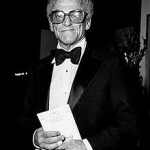 On this day in 1986, American lyricist and librettist, who in collaboration with Frederick Loewe, created some of the world’s most popular and enduring works of musical theatre for both the stage and on film, Alan Jay Lerner died of lung cancer in Manhattan at the age of 67. Born on 31 August 1918 in New York City. He won three Tony Awards and three Academy Awards, among other honors. My favorite Lerner and Loewe musicals are My Fair Lady (1956) and Camelot (1960). He married eight times: Ruth Boyd (1940–1947), singer Marion Bell (1947–1949), actress Nancy Olson (1950–1957), lawyer Micheline Muselli Pozzo di Borgo (1957–1965), editor Karen Gunderson (1966–1974), Sandra Payne (1974–1976), Nina Bushkin (1977–1981) and Liz Robertson (1981–1986 his death).
On this day in 1986, American lyricist and librettist, who in collaboration with Frederick Loewe, created some of the world’s most popular and enduring works of musical theatre for both the stage and on film, Alan Jay Lerner died of lung cancer in Manhattan at the age of 67. Born on 31 August 1918 in New York City. He won three Tony Awards and three Academy Awards, among other honors. My favorite Lerner and Loewe musicals are My Fair Lady (1956) and Camelot (1960). He married eight times: Ruth Boyd (1940–1947), singer Marion Bell (1947–1949), actress Nancy Olson (1950–1957), lawyer Micheline Muselli Pozzo di Borgo (1957–1965), editor Karen Gunderson (1966–1974), Sandra Payne (1974–1976), Nina Bushkin (1977–1981) and Liz Robertson (1981–1986 his death). 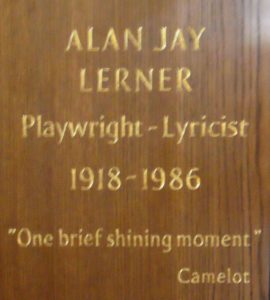
The Final Footprint – Lerner was cremated and his cremains scattered. He has a memorial plaque in St Paul’s Church, the Actors’ Church in Covent Garden in London.
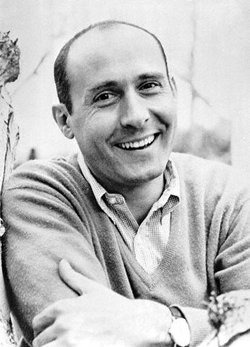 On this day in 1994, United States Army veteran, composer, conductor and arranger, Grammy, Emmy and Oscar winner, Henry Mancini, died of pancreatic cancer in Los Angeles at the age of 70. Born Enrico Nicola Mancini on 16 April 1924 in Cleveland, Ohio. His parents emigrated to America from the Abruzzo region of Italy. Perhaps his best-known works include the theme to The Pink Panther film series (“The Pink Panther Theme”), the Peter Gunn Theme from the television series, the song “Baby Elephant Walk” from the Howard Hawks’s film Hatari (1962) starring John Wayne, and for the songs “Moon River” from the Blake Edwards‘ film Breakfast at Tiffany’s (1961) starring Audrey Hepburn and “Days of Wine and Roses” with lyrics by Johnny Mercer, from the 1962 Edwards’s film of the same name starring Jack Lemmon. Mancini was married to Virginia “Ginny” O’Connor (1951-1994 his death). The Final Footprint – Mancini was cremated.
On this day in 1994, United States Army veteran, composer, conductor and arranger, Grammy, Emmy and Oscar winner, Henry Mancini, died of pancreatic cancer in Los Angeles at the age of 70. Born Enrico Nicola Mancini on 16 April 1924 in Cleveland, Ohio. His parents emigrated to America from the Abruzzo region of Italy. Perhaps his best-known works include the theme to The Pink Panther film series (“The Pink Panther Theme”), the Peter Gunn Theme from the television series, the song “Baby Elephant Walk” from the Howard Hawks’s film Hatari (1962) starring John Wayne, and for the songs “Moon River” from the Blake Edwards‘ film Breakfast at Tiffany’s (1961) starring Audrey Hepburn and “Days of Wine and Roses” with lyrics by Johnny Mercer, from the 1962 Edwards’s film of the same name starring Jack Lemmon. Mancini was married to Virginia “Ginny” O’Connor (1951-1994 his death). The Final Footprint – Mancini was cremated.
#RIP #OTD in 2014 actress, artist, author, muse of Salvador Dalí, colleague of Andy Warhol and one of his so-called Superstars, Ultra Violet, Isabelle Collin Dufresne died in New York City at the age of 78, from cancer. Final resting place Saint-Égrève, near Grenoble, France
Have you planned yours yet?
Follow TFF on twitter @RIPTFF


